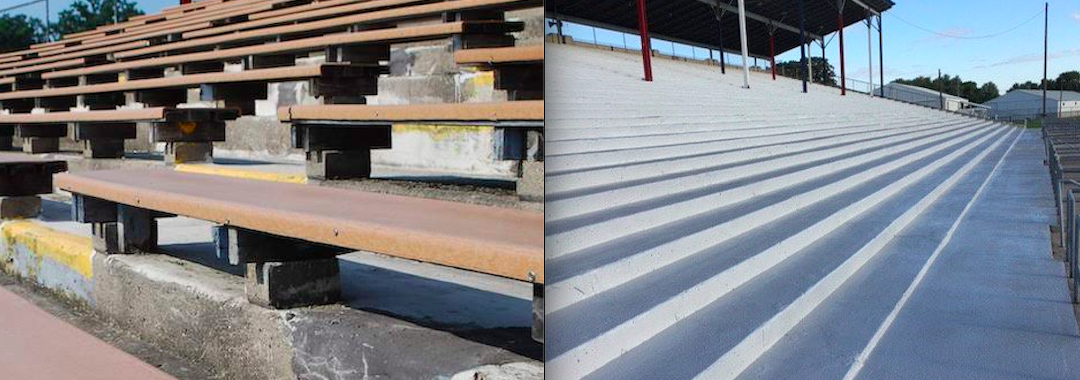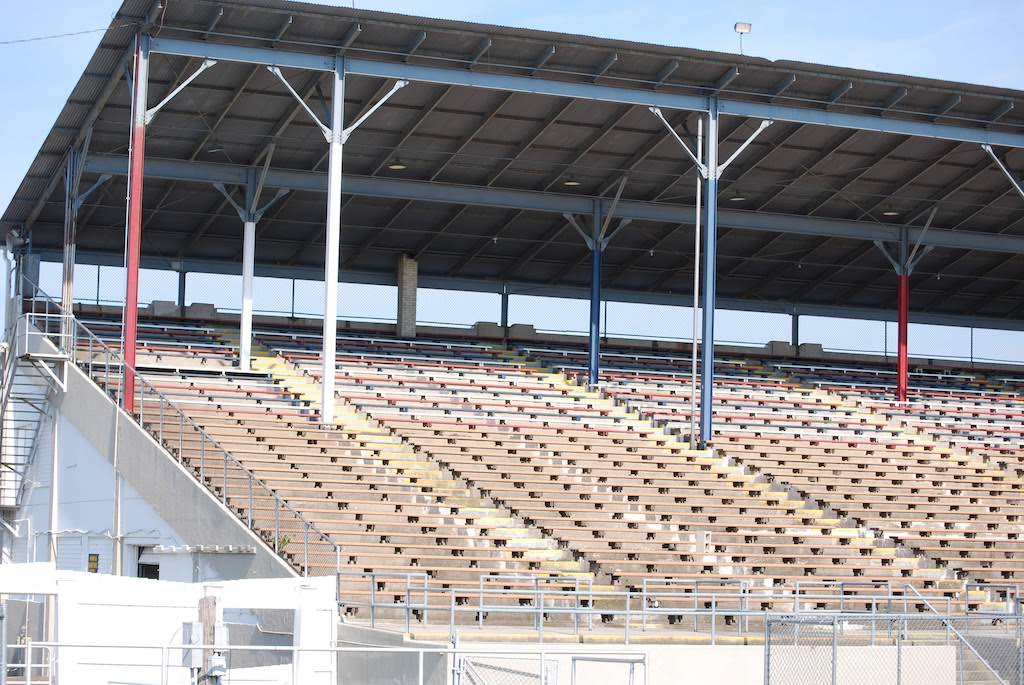The Freeborn County Fair in Albert Lea, Minnesota, has a rich history going all the way back to 1859, a year after Minnesota became a state. In addition to its longevity as a county fair facility, the Freeborn County Fair is known for its large and spacious grandstand and the many attractions it has hosted since it opened in 1940 — including motorcycle races, stock car races, auto thrill shows, horse races, wrestling events, mule races and tractor pulls.
Historical records and newspaper articles show the construction of the grandstand started in 1938 and was completed in 1940, just in time for the August 19 fair.
What’s unique about the Freeborn County Fair Grandstand is that it was partially funded with US government funds through the Works Progress Administration (WPA) —a national works program that provided jobs for over three million men and women to work public construction projects in a government effort to alleviate the effects of the Great Depression.
The project consists of a reinforced concrete structure, which was 210’long and 100’deep, providing room for about 5,000 seats and another 400 seats in the box section. There are 12,600 square feet of exhibit space under the grandstand.
The Challenge:
Over time, water intrusion from the top of the grandstand had caused rebar oxidation and delamination on the joists and risers on the underside of the concrete structure. Deterioration had become so severe that Braun Intertec engineers were asked to investigate the structure. The Engineer of Record at Braun determined that sections of some concrete risers had lost at least 25%– 50% of the original design capacity.
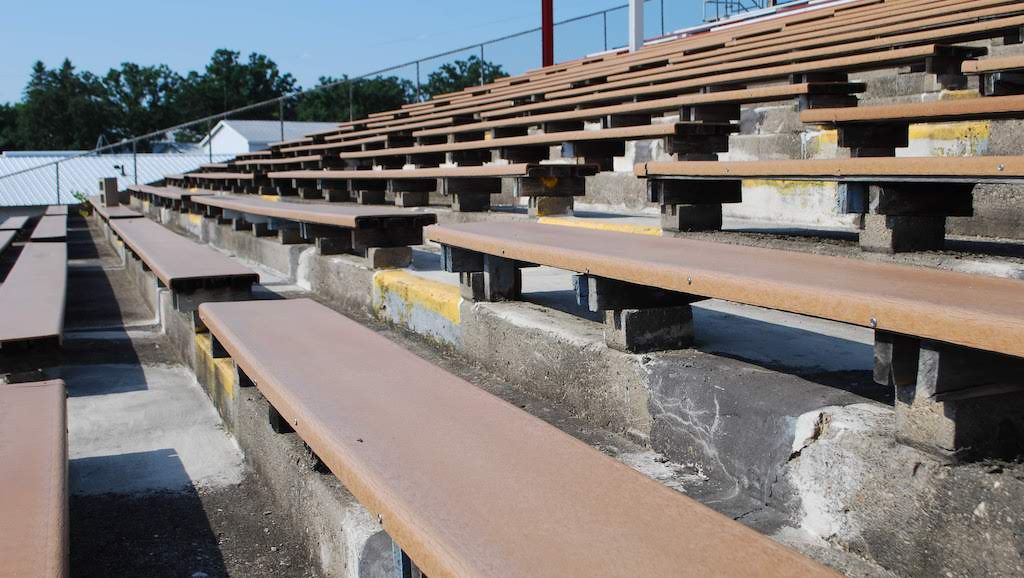
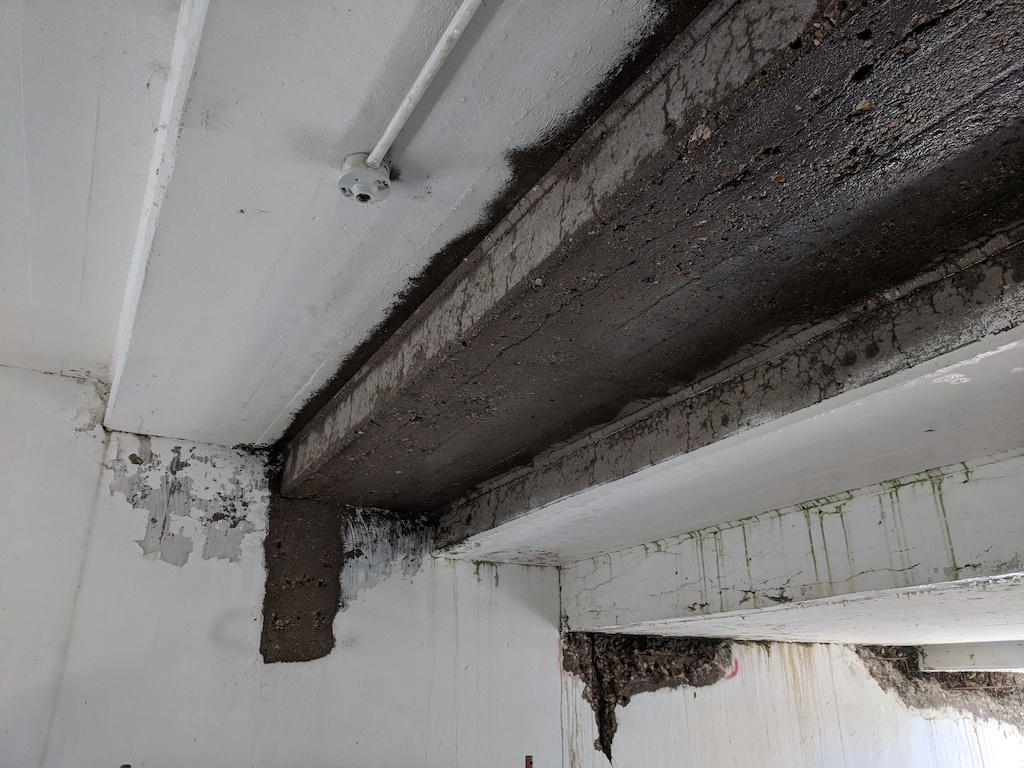
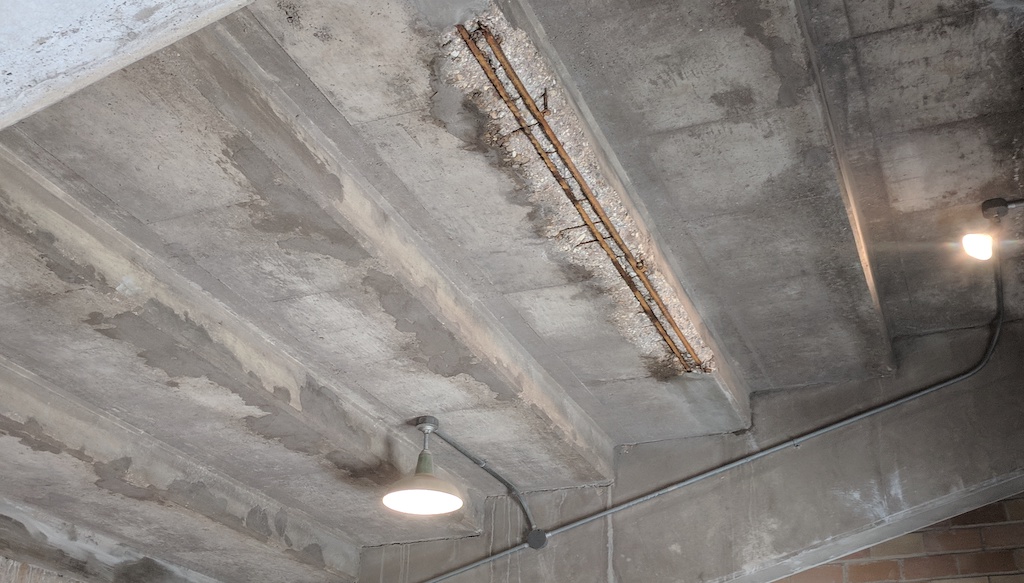
The Solution:
Since the affected area required both repair and strengthening, Simpson Strong-Tie fabric-reinforced cementitious matrix(FRCM) was chosen to repair the area. The visibility of the area to be repaired made FRCM an attractive choice because of its cementitious appearance. The design specified CSS-UCG unidirectional carbon grid installed together with spray applied CSS-CM (Simpson’s proprietary cementitious matrix) to be applied longitudinally to the bottom of the joists and risers where rebar oxidation or delamination was present. For the mezzanine areas, on the other hand, a Simpson Strong-Tie FRP system (CSS-CUCF unidirectional carbon fabric with CSS-ES epoxy) was specified for reasons of installer accessibility. The FRP system does not require a spray applied application whereas FRCM does.
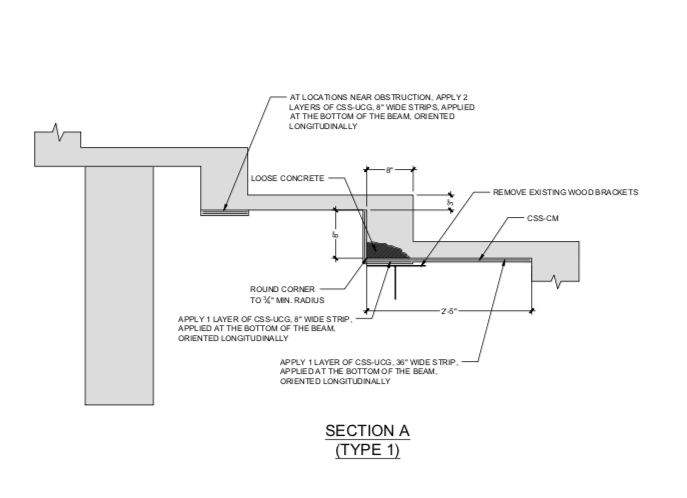
This extensive repair consisted of many steps. The underside of the first level of risers was repaired with standard shotcrete, and then strengthened with FRCM spray applied to the joists and risers. The mezzanine area was hand-patched with trowelable repair mortar, and then strengthened with polymer-based FRP. To help mitigate future water intrusion from the top, a waterproof membrane was applied to the topside bleacher area.
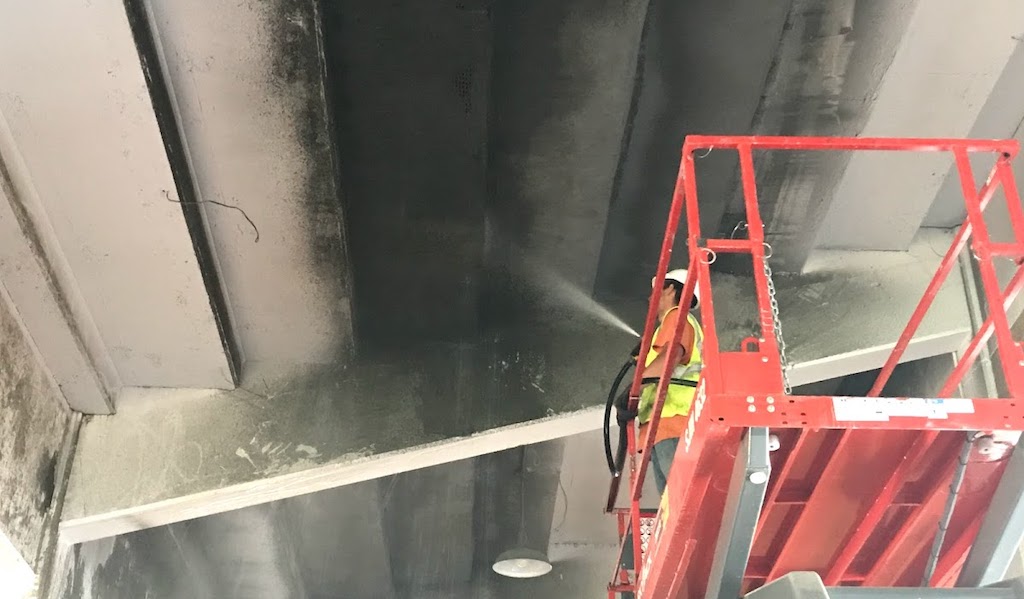

The Results:
In all, the project of repairing and strengthening the grandstand took approximately six months.
Jason Hanlon, P.E., of Braun Intertec, consulting engineers on the project, spoke of the suitability of the Simpson Strong-Tie product solutions to the challenge:
“Once we determined that structural repairs were going to be needed in addition to cosmetic repairs, we presented options for Freeborn County to consider, ranging from full replacement to fiber-reinforced polymers (FRP) to FRCM. Since most of the underside of the risers is exposed and visible to the public during the county fair, it was important to Freeborn County for the concrete of the structure to maintain a uniform look throughout. In the end, they agreed that FRCM presented the best repair solution for cosmetic as well as structural considerations.”
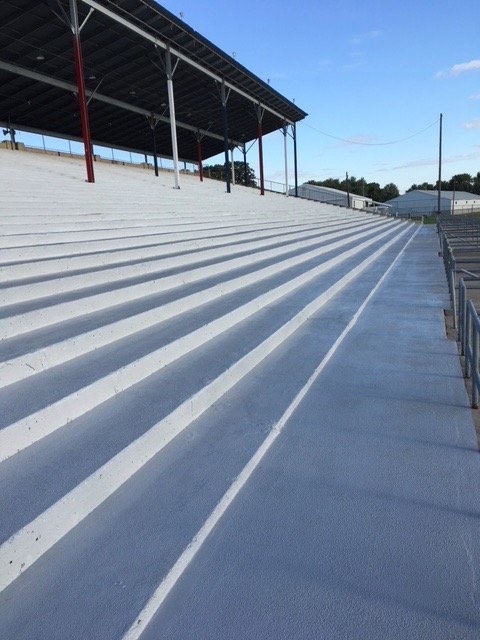
Simpson Strong-Tie Can Help
We recognize that specifying Simpson Strong-Tie® Composite Strengthening Systems™ (CSS) is unlike choosing any other product we offer. Leverage our expertise to help with your FRP strengthening designs. Our experienced technical representatives and licensed professional engineers provide complimentary design services and support – serving as your partner throughout the entire project cycle.
For complete information regarding specific products suitable to your unique situation or condition, please visit strongtie.com/cssor call your local Simpson Strong-Tie RPS Specialist at (800) 999-5099.



